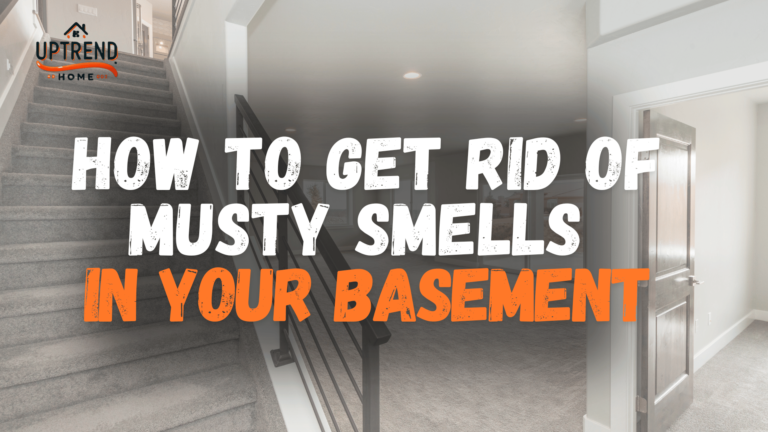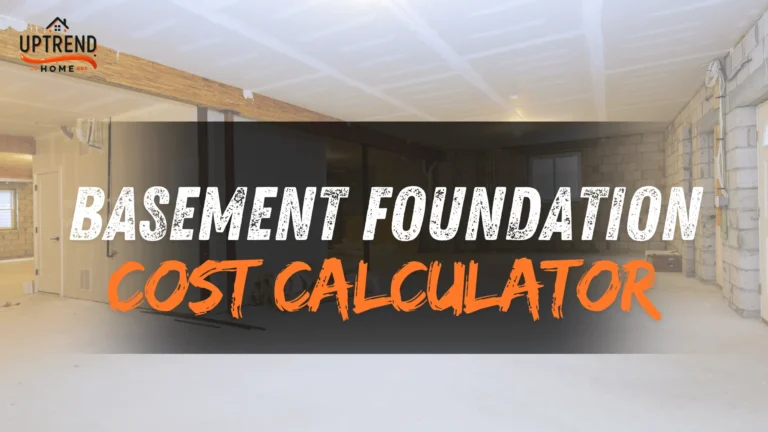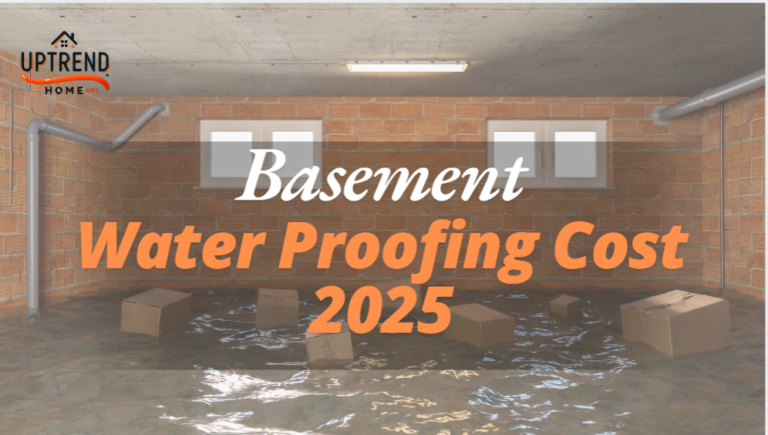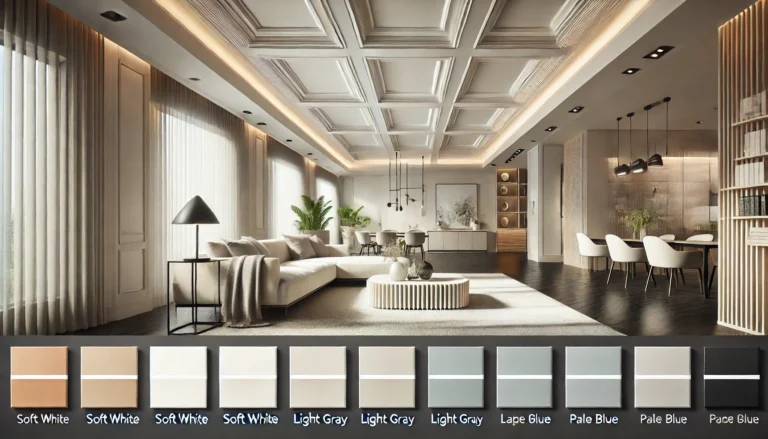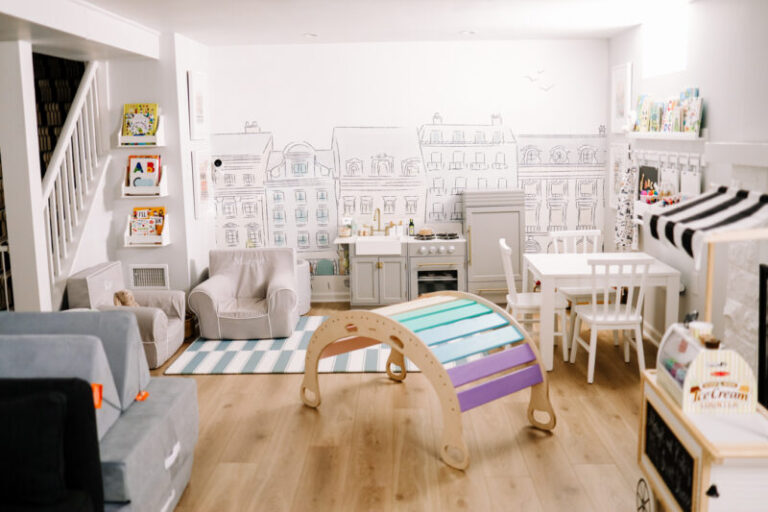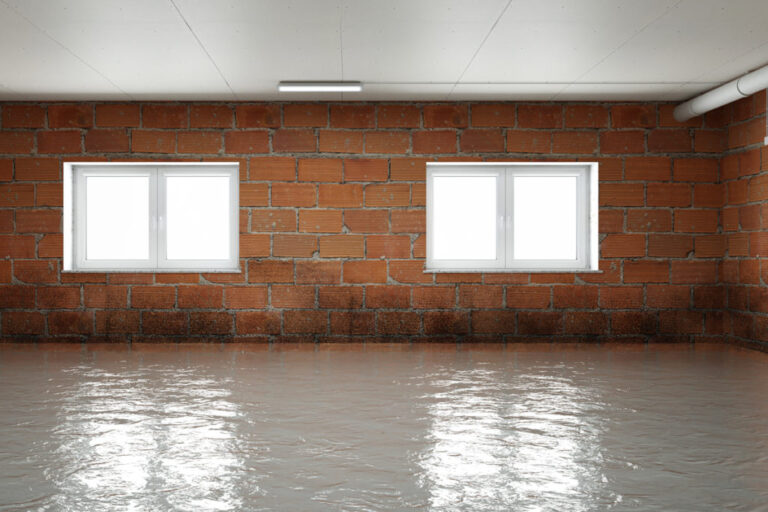Average Cost to Finish a Basement | Detailed Breakdown for 2025
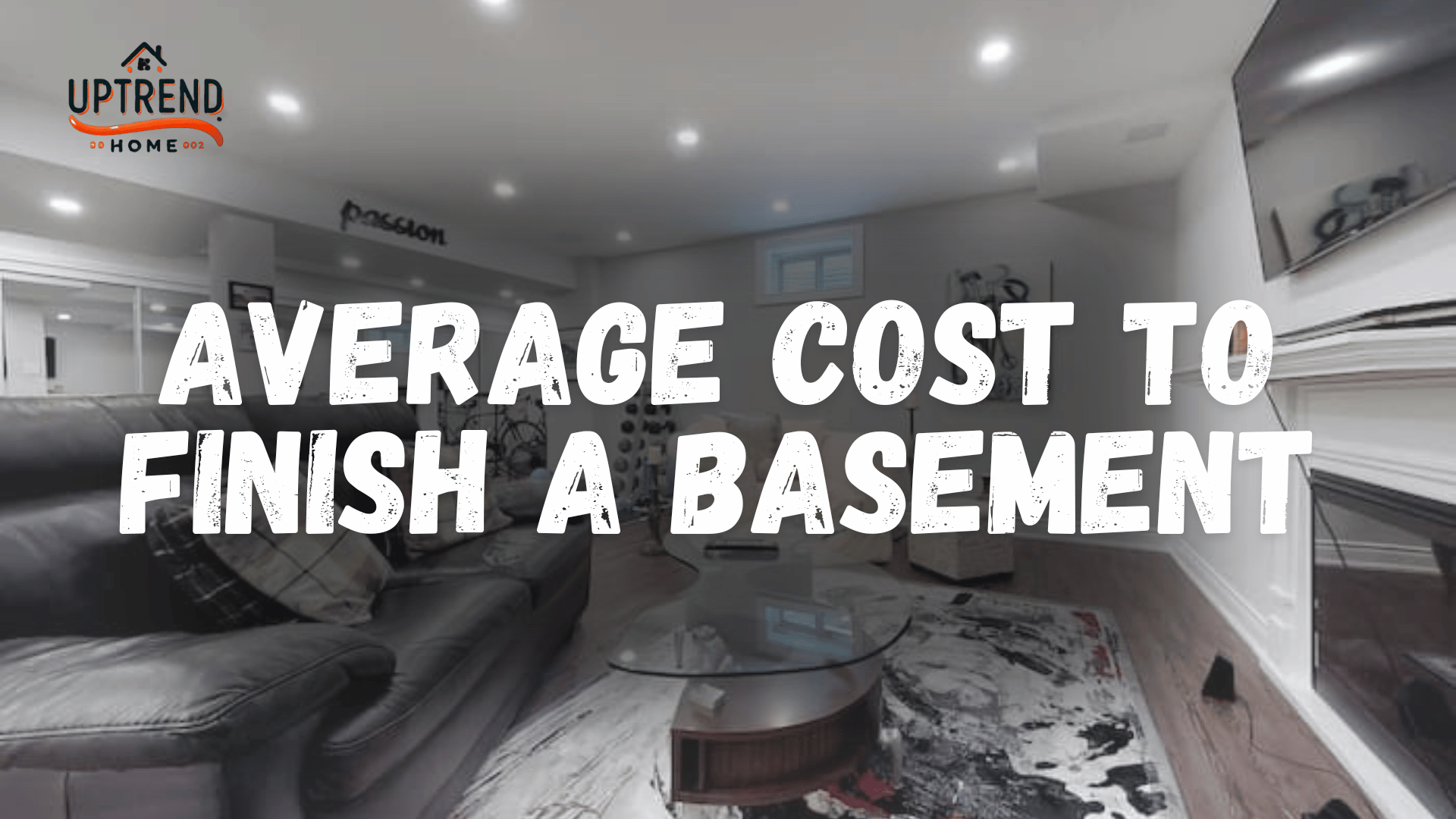
Finishing a basement is one of the smartest investments you can make in your home. Not only does it increase your living space, but it also boosts property value, giving you a cozy retreat right beneath your feet. But before diving in, understanding the average cost to finish a basement in 2025 is crucial for setting the right expectations and planning your budget wisely.
In this guide, we’ll break down every aspect of basement finishing costs, from labor and materials to regional price differences and extra features. Whether you’re dreaming of a modern entertainment hub or a simple guest suite, this detailed breakdown will help you estimate expenses and make informed decisions.
Finishing a basement isn’t just about adding walls and floors—it’s about creating a functional, beautiful space while keeping costs in check. Let’s dig deeper into what you can expect to pay and how to get the most value for your money.
Why This Matters
Understanding these costs can save you from surprises down the line. With terms like cost per square foot and DIY basement finishing expenses becoming common in remodeling conversations, this guide ensures you’ll be ahead of the curve.
Whether you’re planning to finish your basement yourself or hire professionals, knowing the average cost empowers you to turn your basement dreams into reality without breaking the bank.
Let’s roll up our sleeves and explore the detailed breakdown for 2025!
What Does It Mean to Finish a Basement?
Finishing a basement involves transforming it from an unfinished storage area into a comfortable, livable space that complements the rest of your home. This process often includes adding walls, flooring, lighting, and essential utilities. A finished basement not only enhances the functionality of your home but also increases its overall value. Below, we explore its definition and key benefits.
Definition of a Finished Basement
“A finished basement is more than just a storage space; it’s a fully functional living area designed to match the aesthetics and usability of the rest of your home. Unlike an unfinished basement, which may have exposed pipes, concrete walls, and bare flooring, a finished basement includes features like better insulation and proper ventilation. To ensure a comfortable living space and to help you Get Rid of Musty Smells in Your Basement, it’s essential to address moisture issues and maintain good airflow. Here are some key features to consider:
- Insulated and painted walls
- Proper flooring, such as carpet, tile, or laminate
- Ceilings with lighting fixtures
- Electrical, plumbing, and HVAC systems
It transforms what was once a damp, uninviting space into a cozy room that can serve as an entertainment area, home office, gym, or even a separate living suite.
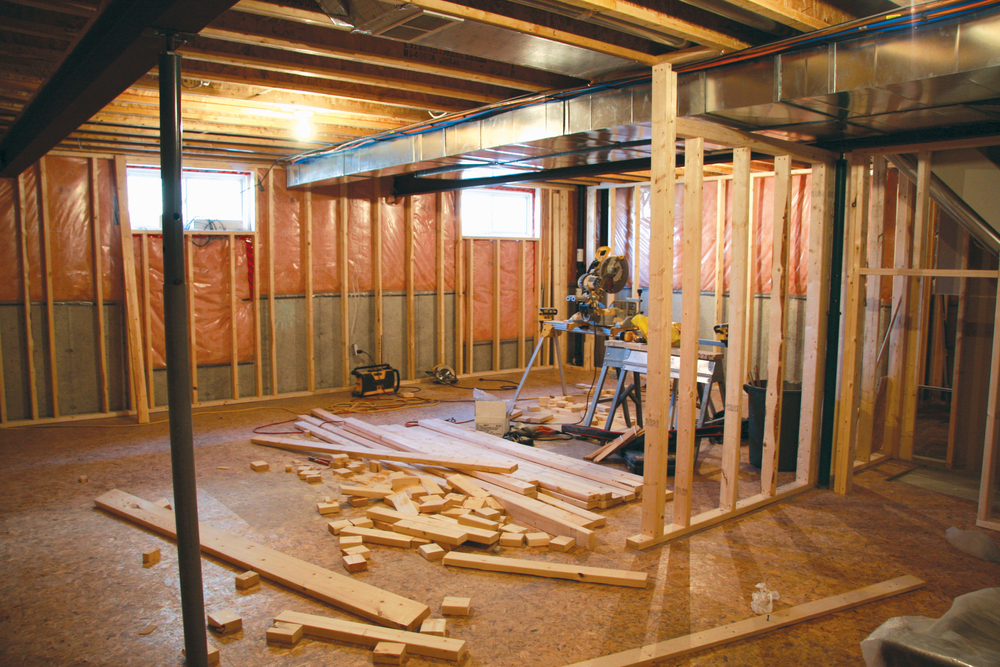
Benefits of Finishing Your Basement
Finishing your basement offers numerous advantages, including:
- Increased Home Value
- Homes with finished basements often have higher resale value. Potential buyers see it as additional usable space, making your property more appealing.
- Extra Living Space
- Whether you need a guest bedroom, a game room, or an extra bathroom, a finished basement provides the perfect solution for growing families or those who frequently entertain.
- Enhanced Energy Efficiency
- With proper insulation, finished basements help in regulating indoor temperatures, leading to lower heating and cooling costs.
- Opportunity for Income
- Turn your basement into a rental unit or Airbnb space for passive income. Adding features like a bathroom or kitchenette makes it a viable living area.
- Protection Against Moisture
- A finished basement often requires addressing moisture and water issues, providing long-term protection against mold and dampness.
As the saying goes, “A house is only as strong as its foundation,” and finishing your basement ensures this vital area of your home is both functional and beautiful.
Ready to make your basement the star of your home? Let’s break down the costs to see what fits your budget!
Average Cost to Finish a Basement in 2025
Finishing a basement in 2025 involves a range of costs influenced by various factors, including the size of the basement and the type of finishes you choose. This investment not only adds functional living space but also significantly boosts your home’s value. Let’s break down the essential cost components.
Key Factors Affecting Costs
Several elements impact the cost of finishing a basement, including:
- Materials Used: High-end finishes like hardwood floors and custom cabinets cost more than basic alternatives.
- Labor Charges: Skilled contractors and specialists charge varying rates based on complexity and location.
- Basement Condition: Basements requiring waterproofing, mold remediation, or structural repairs increase upfront costs.
- Permits and Legal Requirements: Local codes may require permits, which come with associated fees.
Cost Range Based on Basement Size
The size of your basement plays a significant role in determining the total cost. Here’s a quick overview:
- Small Basements (500–700 sq. ft.): Costs range from $7,500 to $25,000 depending on finishes.
- Medium Basements (800–1,500 sq. ft.): Typically range from $15,000 to $45,000.
- Large Basements (1,500+ sq. ft.): Costs can escalate to $50,000 or more, especially for luxury designs.
Cost Per Square Foot
The average cost per square foot to finish a basement in 2025 is approximately $30 to $100.
- Basic Finish: Around $30–$50 per sq. ft., ideal for simple flooring, walls, and lighting.
- Mid-Range Finish: Between $50–$70 per sq. ft., including added amenities like bathrooms or wet bars.
- High-End Finish: Starts at $70+ per sq. ft., featuring premium materials and intricate design work.
Finishing a basement is an investment that pays dividends in comfort, usability, and resale value. It’s crucial to plan carefully, set a budget, and prioritize features that align with your needs.
Breakdown of Basement Finishing Costs
When it comes to finishing your basement, understanding the specific cost components can help you plan effectively and avoid surprises. Here’s a detailed breakdown of the most common expenses involved.
Framing and Insulation
- Framing Costs: Framing is essential for creating separate rooms or open spaces. It costs around $7–$16 per square foot, depending on the complexity and materials.
- Insulation Costs: Proper insulation keeps your basement comfortable and energy-efficient. Expect to spend between $1.50 and $3.50 per square foot for materials like fiberglass or spray foam.
- Pro Tip: Opt for spray foam insulation if your area has extreme temperature fluctuations—it’s pricier but more effective.
Electrical and Plumbing
- Electrical Wiring: Installing outlets, lighting, and a circuit breaker can cost $2,000–$6,000, depending on the number of fixtures.
- Plumbing Costs: Adding plumbing for a bathroom or wet bar can range from $1,500–$5,000.
- Did You Know? Adding an extra bathroom to your finished basement can increase your home’s resale value by 10–20%!
Flooring Options and Costs
Flooring choices greatly impact your basement’s functionality and aesthetics. Here’s a cost comparison:
- Carpeting: Affordable and cozy, costing $3–$8 per square foot.
- Vinyl Plank Flooring: Durable and waterproof, priced between $4–$10 per square foot.
- Tile Flooring: Stylish and moisture-resistant, with costs ranging from $5–$15 per square foot.
- Money-Saving Tip: Consider vinyl plank flooring for a balance between style and affordability.
Painting Walls and Ceiling
Painting is a cost-effective way to brighten your basement.
- Wall Painting: Costs about $2–$4 per square foot, depending on the paint quality.
- Ceiling Painting: Slightly higher, at $3–$6 per square foot, especially if you opt for specialty finishes.
- Pro Tip: Use light, neutral colors to make your basement feel more open and airy.
Finishing your basement involves juggling several cost components, but breaking them down makes budgeting easier. By prioritizing features and choosing cost-effective options, you can transform your basement without breaking the bank.
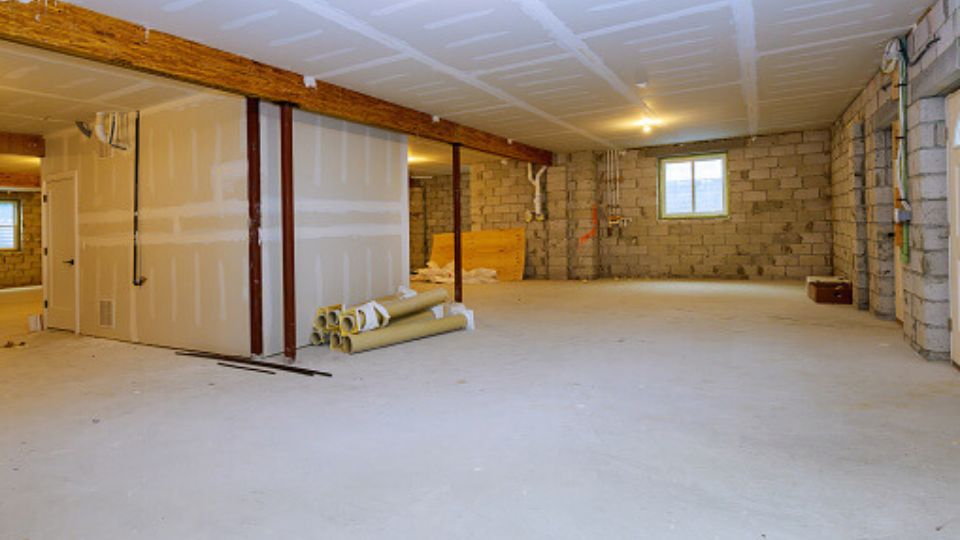
Additional Features to Consider
When planning your basement renovation, incorporating extra features can enhance its functionality and add significant value to your home. Let’s dive into some key upgrades and their associated costs.
Basement Bathroom Costs
Adding a bathroom is a popular choice for creating a more livable space. Here’s a breakdown:
- Half Bathroom: Costs range from $3,000 to $6,000, depending on fixtures and plumbing requirements.
- Full Bathroom: Expect to spend between $6,000 and $15,000 for amenities like a shower or tub.
- Pro Tip: Opt for water-saving fixtures to keep utility bills in check and reduce your environmental footprint.
Adding a Kitchen or Wet Bar
A basement kitchenette or wet bar can transform your basement into a self-contained living or entertaining space, but it’s important to consider the kitchen remodeling cost to ensure the project fits within your budget.
- Wet Bar Costs: Installing a basic wet bar starts at $3,000 but can reach $10,000+ for high-end finishes and appliances.
- Kitchen Costs: A modest basement kitchenette may cost $8,000–$15,000, while a fully equipped kitchen can exceed $25,000.
- Did You Know? Adding a kitchen or wet bar increases the potential for rental income if you choose to convert the basement into an apartment.
Egress Windows and Door Installation
Egress windows and doors aren’t just a safety feature—they’re often required by building codes.
- Egress Window Costs: Installing egress windows costs between $2,500 and $5,000, including excavation and materials.
- Basement Door Costs: Adding an exterior door can range from $1,500 to $4,000, depending on the size and material.
- Money-Saving Tip: Combine window and door installations during framing to cut labor costs.
The Bottom Line
These additional features elevate your basement from a simple finished space to a functional, multipurpose area. While they add upfront costs, the long-term benefits in terms of utility, enjoyment, and home value make them worthwhile investments.
DIY vs. Hiring Professionals
Deciding whether to take the DIY route or hire professionals for basement finishing depends on your budget, skillset, and timeline. While DIY can save money upfront, it requires significant time, effort, and expertise to ensure the project meets building codes and quality standards.
How Much Does It Cost to Finish a Basement Yourself?
For DIY enthusiasts, the cost to finish a basement yourself can range between $5,000 to $15,000, depending on the materials, tools, and extent of the project.
- Framing and Insulation: You could save on labor costs by doing it yourself, with materials averaging $1 to $3 per square foot.
- Flooring: Options like vinyl or laminate are budget-friendly at around $2 to $5 per square foot.
- Electrical and Plumbing: Unless you’re a licensed expert, these areas might require professional intervention due to safety and code compliance.
Pro Tip: Start with smaller, manageable tasks like painting walls or laying flooring before tackling major installations. This allows you to gauge your DIY capability while minimizing risks.
When to Hire a Contractor
Hiring a professional might cost more, ranging from $20,000 to $75,000, but it offers:
- Expertise and Efficiency: Pros can complete the job faster and ensure compliance with building codes.
- Customization: Contractors can design specialized features like wet bars, custom lighting, or egress windows.
- Peace of Mind: Licensed professionals often provide warranties, reducing risks of future repairs.
If your basement requires significant structural changes, advanced plumbing, or electrical upgrades, hiring a contractor is the safer and more practical choice.
Phrase to Ponder: “Time is money—know when to roll up your sleeves and when to call in the cavalry.
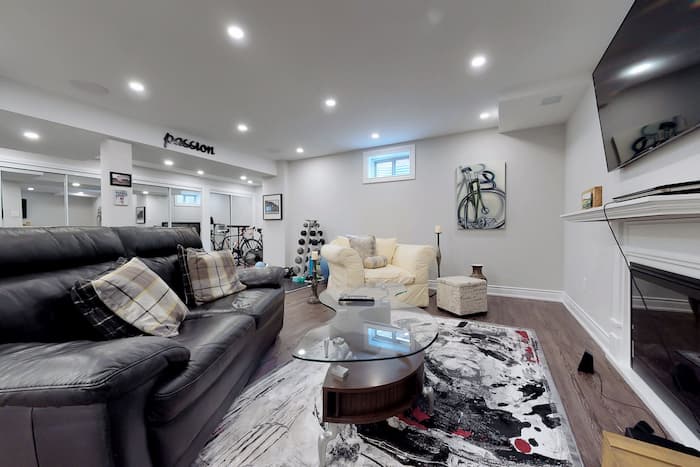
Permits and Legal Requirements
Before transforming your basement into a livable space, it’s essential to navigate permits and legal obligations. Ignoring these requirements can lead to fines, delays, or even the need to redo work.
Costs of Basement Permits
Permits are a non-negotiable step for most basement finishing projects. Here’s what you need to know:
- Average Cost: Permit costs vary widely, typically ranging from $500 to $2,000, depending on your location and project complexity.
- Types of Permits Needed:
- Building permit: For structural changes like framing or insulation.
- Electrical permit: For wiring and outlets.
- Plumbing permit: If adding a bathroom, kitchen, or wet bar.
- HVAC permit: Required for new heating or cooling systems.
Pro Tip: Check with your local municipality or building department to get an accurate estimate of permit fees in your area.
Building Codes You Need to Know
Compliance with building codes ensures your basement is safe, functional, and up to standard:
- Ceiling Height: Most codes require a minimum height of 7 feet for finished spaces.
- Egress Windows: If your basement includes bedrooms, at least one egress window is typically mandatory for emergency exits.
- Insulation Standards: Proper insulation (e.g., R-13 or R-19) is often required to meet energy efficiency codes.
- Electrical Outlets: Code usually requires outlets every 12 feet along walls. Ground fault circuit interrupter (GFCI) outlets are required near water sources.
Failure to meet these requirements could result in your project being halted or deemed illegal after completion.
Checklist for Necessary Basement Permits
Here’s a handy checklist to ensure you’ve covered all the permit and inspection bases before starting your basement finishing project:
Step 1: Research Requirements
- Contact Local Building Authority:
- Verify specific permit types and associated costs.
- Understand zoning restrictions (e.g., separate entrances for rental units).
- Check for HOA Guidelines (if applicable):
- Some homeowners associations may have additional rules or restrictions.
Step 2: Permits You May Need
- Building Permit: Required for structural changes like framing, walls, or insulation.
- Electrical Permit: Necessary for wiring, lighting, outlets, and electrical panels.
- Plumbing Permit: Needed for any water-related work, such as bathrooms, wet bars, or sump pumps.
- HVAC Permit: If you’re adding ductwork, heating, or cooling systems.
- Egress Permit: Often required for installing or enlarging windows and doors for emergency exits.
Step 3: Gather Necessary Documents
- Project blueprints or design plans (may need to be approved by a licensed professional).
- Contractor details, if hiring professionals (some areas require contractor licensing info).
- Property details, including existing floor plans.
Step 4: Submit Your Application
- Submit your completed permit application through your local government’s building department website or office.
- Pay the applicable fees.
Step 5: Inspections During and After Construction
- Schedule Inspections: Most projects require at least two inspections: one mid-construction and one after completion.
- Keep Records: Retain copies of permits, receipts, and inspection reports for future reference or resale purposes.
Tips for Navigating the Permit Process
- Don’t Cut Corners: Skipping permits may save time and money initially, but it can cost you significantly more in the long run (e.g., fines or difficulty selling your home).
- Use Professionals: If you’re unsure about requirements, consult with a contractor or architect—they’re familiar with local codes and can streamline the process.
- Budget for Delays: Permits can take several weeks to be approved, so plan accordingly.
- DIY Friendly Areas: Some regions have lenient DIY guidelines, but always double-check what you’re allowed to handle yourself.
By following this checklist, you’ll stay on the right side of the law and ensure your basement transformation is smooth and stress-free!
How to Save Money on Basement Finishing Costs
Finishing a basement doesn’t have to break the bank. With smart planning and budget-friendly strategies, you can reduce costs without sacrificing quality.
Choose Affordable Yet Durable Materials
Opt for materials that offer a balance between cost and durability:
- Flooring: Laminate or vinyl flooring mimics hardwood at a fraction of the cost, ranging between $2 to $5 per square foot.
- Walls: Instead of drywall, consider paneling options, which are both affordable and easy to install.
- Lighting: LED fixtures are energy-efficient and cost-effective over time.
Pro Tip: Check out local discount stores or online marketplaces for deals on materials.
Do Some Tasks Yourself
While hiring professionals is often necessary for complex work, you can take on simpler tasks like:
- Painting walls and ceilings to save on labor costs.
- Installing baseboards or trim after flooring is complete.
- Sealing gaps to improve insulation and energy efficiency.
Even small DIY contributions can shave off hundreds of dollars from the final bill.
Plan in Phases
If your budget is tight, finish your basement in stages:
- Start with essentials like waterproofing, framing, and insulation.
- Add features like flooring and lighting later as funds allow.
- Leave specialty spaces, such as bathrooms or kitchens, for the final phase.
This phased approach ensures progress without financial strain.
Leverage Tax Benefits and Financing Options
- Tax Deductions: Improvements like energy-efficient windows may qualify for tax rebates.
- Financing: Explore home equity loans or personal loans for manageable monthly payments.
Average Cost of Basement Finishing in Different Locations
When planning your basement finishing project, understanding regional cost variations can help you budget more effectively. Here’s a breakdown of how costs fluctuate in different locations, focusing on Michigan, Colorado, and Utah, along with insights into broader regional price trends.
Costs in Michigan, Colorado, and Utah
Michigan
Average Cost Range: $25,000 – $50,000
Factors:
Michigan’s cold climate often requires enhanced insulation and waterproofing measures.
Labor costs in Michigan are moderate compared to the national average, which can keep total expenses in check.
Colorado
Average Cost Range: $30,000 – $60,000
Factors:
Basements in Colorado often include egress windows due to safety regulations, increasing costs.
The state’s fluctuating weather can necessitate additional investments in moisture control and ventilation.
Utah
Average Cost Range: $20,000 – $45,000
Factors:
Utah homeowners frequently prioritize family-friendly spaces like home theaters or play areas, which may influence costs.
Lower labor rates in Utah contribute to its relatively affordable pricing compared to other states.
Regional Price Variations
- Northeast States
- Average Cost: $40,000 – $75,000
- Higher labor rates and stringent building codes often drive up expenses in this region.
- Homes with older foundations may require structural reinforcements.
- Southern States
- Average Cost: $20,000 – $45,000
- Due to fewer basements in these states, contractors may charge a premium for specialized basement finishing services.
- Midwestern States
- Average Cost: $25,000 – $50,000
- Moderate material and labor costs keep prices within a reasonable range.
- Basements are common in the Midwest, ensuring competitive pricing among contractors.
- Western States
- Average Cost: $30,000 – $65,000
- Modern design trends often incorporate luxury features like home gyms or wine cellars, which can elevate the cost.
- Geographical factors like higher elevation in mountainous areas may influence construction challenges and pricing.
Key Takeaways
- Research Locally: Labor and material costs vary widely, so always get multiple quotes from contractors in your area.
- Prioritize Essentials: Climate considerations, such as waterproofing in wet areas or insulation in cold zones, can significantly impact costs.
- Customize to Your Needs: Regional trends, like adding luxury features in the West or functional spaces in Utah, should align with your personal goals.
Value Added by a Finished Basement
Investing in finishing your basement can significantly enhance your home’s functionality and market value. Here’s a closer look at the benefits it brings.
How Much Value Does Finishing a Basement Add?
Finishing a basement isn’t just about adding extra living space; it’s also a smart financial move. Here’s why:
- Increase in Property Value:
A finished basement can boost your home’s market value by up to 70% of the project cost. For instance, if you spend $50,000 on finishing, you could see an approximate $35,000 increase in value. - Enhanced Usability:
Transforming the space into a home theater, gym, or guest suite adds functional areas that buyers find appealing, making your home more attractive in the market. - Energy Efficiency Benefits:
Adding insulation and energy-efficient systems during finishing can reduce utility bills, which is a selling point for eco-conscious buyers. - Return on Investment (ROI):
While ROI varies by location, homes with finished basements generally sell faster and for higher prices than homes with unfinished spaces.
Finished Basement vs. Home Additions
When considering home improvement projects, should you finish the basement or invest in an above-ground addition?
- Cost Comparison:
- Finished Basement: Typically costs between $30 to $75 per square foot, making it one of the most affordable ways to increase living space.
- Home Additions: Can range from $150 to $300 per square foot, depending on design and materials.
- Construction Complexity:
- Basement Finishing: Utilizes existing structures, reducing time and complexity.
- Additions: Require extensive permits, external construction, and potential landscaping changes.
- Resale Value:
- A finished basement offers a higher ROI because of its lower upfront costs and versatility.
- Home additions may yield similar value but require a much larger initial investment.
- Usability:
- A finished basement offers multi-functional spaces like game rooms, apartments, or offices.
- Additions can expand living spaces like bedrooms or family rooms but might disrupt the outdoor layout.
Financing Options for Basement Finishing
Finishing a basement can be a substantial investment, but there are various financing options to help you fund the project. Here’s a breakdown of the most popular methods:
Home Equity Loans
A home equity loan is a popular financing option for basement finishing. This type of loan allows you to borrow against the equity in your home, typically offering lower interest rates compared to other loans.
- Advantages:
- Lower Interest Rates: Because the loan is secured by your home, lenders often offer favorable rates.
- Fixed Loan Terms: Home equity loans usually come with fixed interest rates and repayment schedules, making them easier to manage.
- Large Loan Amounts: You can borrow significant amounts, depending on the equity in your home.
- Disadvantages:
- Risk to Your Home: If you can’t repay the loan, your home may be at risk.
- Closing Costs: There may be fees and closing costs involved in securing the loan.
Personal Loans for Renovation
If you don’t want to use your home as collateral, a personal loan can be a good alternative for funding your basement finishing project.
- Advantages:
- No Collateral Required: Personal loans are unsecured, meaning you won’t risk your home or assets.
- Quick Approval Process: You can often get approved quickly, with some loans funded within a few days.
- Fixed or Variable Rates: Depending on your credit, you may be able to secure competitive rates.
- Disadvantages:
- Higher Interest Rates: Personal loans typically come with higher interest rates compared to home equity loans.
- Smaller Loan Amounts: Depending on your creditworthiness, the loan amount may be limited.
- Shorter Repayment Period: Personal loans often have shorter repayment terms, meaning higher monthly payments.

